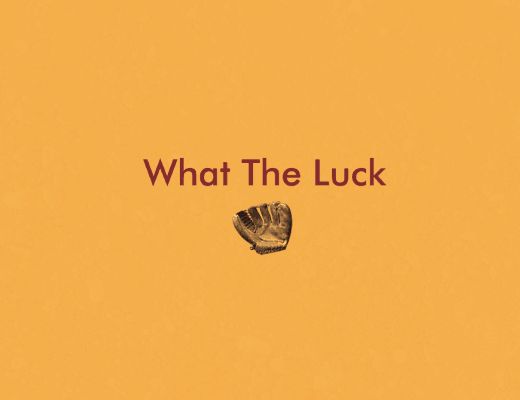When you spend an early draft pick on a player, you expect good value in return. When you don’t get it, the results are sometimes disastrous. We already took a look at the biggest disappointments from the guys who swing the bats so now let’s take a look at the fellas who throw the baseballs. Hopefully, we can learn something from these epic failures.
Ricky Nolasco (SP), ADP 174, 2011 Roto Value -3.7: Nolasco continues to defy some of the core sabermetric stats. His xFIP over the past three seasons has been as high as 3.55 and as low as 3.23 which should mean his ERA should be around those ranges as well but his lowest ERA in the past three years was 4.51 (which is not very good, folks). He always seems to have a BABIP that would lead you to believe he’s been unlucky but somehow it keeps happening to him. He seems to be a different pitcher each year with varying strikeout rates constantly (as well as changing groundball percentages and HR’s/9). The only lesson to be learned here is that Ricky Nolasco is an enigma as his xFIP seems to be 1.00 below his actual ERA every year. I don’t know what to make of him any longer.
Brett Myers (SP), ADP 170, 2011 Roto Value -3.0: For those who saw his 3.14 ERA in 2010, they were extremely disappointed to get a 4.46 ERA with only 7 wins in 2011. The red flag about his 2010 season was his very low HR/FB rate which gave him his lowest HR/9 rate of his career by far. The low HR totals had to influence his ERA even if his xFIP seemed to indicate it was legit. One of the weaknesses of xFIP is that it does not account for HR/FB rates that are out of the ordinary.
John Danks (SP), ADP 104, 2011 Roto Value -2.8: Danks has been nothing if not consistent with his ERA, K/9 and Wins being very similar from 2008-2010. Despite that apparent consistency, he had benefited from a lucky HR/FB rate in 2008, a lucky BABIP in 2009 and a little of both in 2010. In 2011, those both leveled off to more normal levels and resulted in a 4.33 ERA and he could only muster 8 wins on the season. Wins are tricky because even the best pitcher has little control over them. All in all, if anything, Danks showed more of his true colors in 2011.
Trevor Cahill (SP), ADP 94, 2011 Roto Value -2.8: Cahill jumped from a 4.63 ERA pitcher with a 1.44 WHIP in his rookie year to become a 2.97 ERA pitcher with a 1.11 WHIP in 2010. 2011 fantasy players drafted him with delight after that fine performance. Unfortunately, both of those numbers were greatly affected by Cahill’s tiny .236 BABIP which meant that he allowed way less hits and thus less runs. In 2011, his core numbers (strikeouts, walks, HR’s allowed) all stayed about the same as 2010 but his BABIP jumped back to league average range as expected and his ERA and WHIP jumped up too. Fantasy owners were sad.
Ryan Dempster (SP), ADP 92, 2011 Roto Value -3.5: Since becoming a full-time starter in 2008, here is how Dempster’s xFIP has gone each year: 3.69, 3.76, 3.74, 3.70. Amazingly consistent and, yes, that includes 2011. So why was 2011 so bad for him? A slightly lower LOB% and a big leap in his BABIP meant bad luck struck down upon him and raised his ERA to 4.80 and his WHIP to 1.45. He got lots of K’s as usual but the wins didn’t come his way either. It was a season of bad luck for Dempster unfortunately and he should be undervalued next year.
Chad Billingsley (SP), ADP 86, 2011 Roto Value -3.0: Billingsley has slowly been changing into a different pitcher each year. His K/9 has continued to drop since 2008 and so has his Swinging Strike percentage which means it wasn’t a fluke. In 2010, Billingsley still posted a 3.57 ERA despite the drop in K’s. Owners had confidence that he’d continue to have a low ERA and the strikeouts may come back. But, astute owners should have looked at his HR/FB rate and seen that it was a tiny 4.5% which was about half of his career norm. That resulted in a fluky drop in ERA. In 2011, that rate returned to normal and his strikeouts continued to drop and walks rose up. Pay attention to pitcher trends if you have a few year’s worth of data to analyze.
Ubaldo Jiminez (SP), ADP 43, 2011 Roto Value -2.9: In 2010, Ubaldo had an 8.69 K/9 rate and 3.74 BB/9 rate. In 2011, it was 8.60 and 3.73 respectively. So, why did drop from 2.88 to 4.68 while his WHIP jumped up 25 points too? It was a mix of good luck in 2010 and bad luck in 2011. There were warning signs that 2010 was a fluke such as his HR/FB rate dropped to a career low but also his LOB% rose to a career high meaning even when he let people on base they weren’t scoring. Also, his roto value was spiked by a high Win total which we know is unpredictable. In 2011, his HR/FB rose and LOB% dropped big time which caused the opposite effect of him having an unlucky year. While the factors that showed he was lucky in 2010 should have warned you about him, it was hard to predict that he would be so unlucky in 2011.
So, what did these fantasy busts teach us about how to draft in 2011? Here’s a rundown:
- While FIP and xFIP are great tools to show if a pitcher was lucky or unlucky, HR/FB rates should be taken into account as well (lower than career norm means pitcher was lucky and higher means pitcher was unlucky). xFIP does not account for it which can cause you to value someone incorrectly.
- If a player had a seemingly lucky year, don’t forget to check his LOB% as well to see what happened when he let guys on base. If it’s higher than normal (around 70% is generally normal each year) then you should realize that a correction is upcoming.
- Swinging strike rate can be a good indicator on whether a pitcher’s K/9 rate is normal. A normal swinging strike rate is 8.5% but each pitcher has their own “normal” so look at their past history.
- Even if you make the right call on a who to draft, bad luck can fall upon your pitchers. It’s tough but there’s really nothing you can do about it. Sometimes it corrects itself and sometimes it doesn’t. It’s the great hidden variable in fantasy sports.


